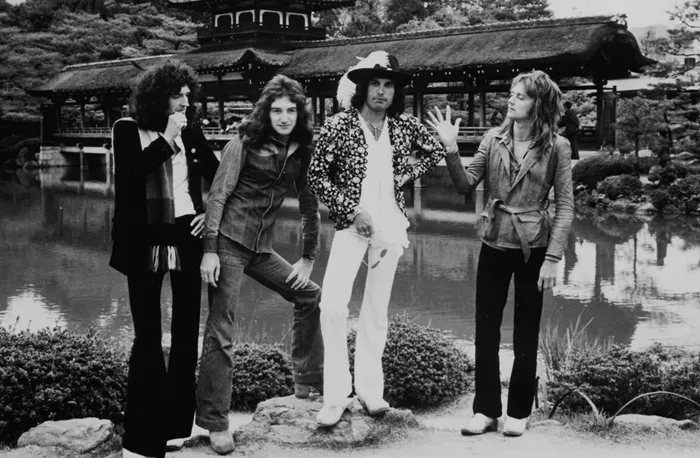Rock music, a genre that has captivated audiences for decades, is characterized by its dynamic range, powerful rhythms, and often complex textures. Musical texture, which refers to how the melodic, rhythmic, and harmonic materials are combined in a composition, plays a crucial role in defining the sound and feel of a piece. In rock music, textures can vary widely, but some are more prevalent than others. This article delves into the different types of musical textures and identifies which one occurs least frequently in rock music.
1. Understanding Musical Texture
Musical texture is a critical concept in music theory that describes the overall quality of sound in a piece. It includes several types:
Monophonic Texture: A single melody without any harmonic accompaniment.
Homophonic Texture: A primary melody accompanied by chords.
Polyphonic Texture: Multiple independent melodies occurring simultaneously.
Heterophonic Texture: A single melody played by multiple performers with slight variations.
Each of these textures brings a unique flavor to music, influencing how a piece is perceived and experienced by listeners.
2. Common Textures in Rock Music
Homophonic Texture
Homophonic texture is the most common in rock music. This texture involves a main melody supported by harmonic accompaniment, usually in the form of chords played on guitar, keyboard, or both. The structure of most rock songs, with a lead singer and instrumental backing, naturally lends itself to this texture. Examples include the majority of classic rock anthems, where the vocals are clearly at the forefront, supported by chordal progressions and rhythms.
Polyphonic Texture
Polyphonic texture is also present in rock music, though less frequently than homophonic texture. Polyphony involves multiple independent melodies interweaving, creating a complex and rich sonic tapestry. Some rock subgenres, particularly progressive rock and certain metal styles, utilize polyphonic textures to add complexity and depth to their compositions. Bands like Yes and Genesis, as well as certain works by The Beatles, demonstrate this texture effectively.
Heterophonic Texture
Heterophonic texture is rare in Western music but can occasionally be found in rock. It involves a single melody played by multiple musicians with slight variations. This texture is more common in non-Western musical traditions but can appear in rock, particularly in live performances where improvisation leads to variations in the melody.
3. The Least Frequently Occurring Texture: Monophonic
Monophonic texture is the least frequently occurring texture in rock music. This texture involves a single melodic line without any harmonic or rhythmic accompaniment. In the context of rock music, monophony is rare because the genre heavily relies on the interplay of vocals, guitars, bass, and drums, which inherently creates richer textures.
Reasons for Monophonic Texture’s Rarity in Rock Music
Instrumental Focus: Rock music typically features a combination of electric guitars, bass, drums, and often keyboards. These instruments are used to create harmonic and rhythmic backgrounds that support the main melody, making purely monophonic textures uncommon.
Vocal Harmonies: Rock music often incorporates vocal harmonies, where backup singers provide harmonic support to the lead singer, thus moving away from monophony.
Rhythmic Elements: The driving rhythms in rock music, provided by the drums and bass, inherently add layers to the texture, making it more complex than monophony.
Examples of Monophonic Passages in Rock
While monophonic texture is rare, there are instances where it can be found, typically in brief passages within a song rather than entire compositions:
A Cappella Sections: Some rock songs feature a cappella sections where the lead singer performs without instrumental backing. These moments, though brief, are instances of monophonic texture.
Introductory Lines: Certain rock songs may begin with a solo instrument or vocal line, creating a momentary monophonic texture before the full band joins in. An example is the intro to “Blackbird” by The Beatles, where the solo vocal line starts the song.
Breakdowns: Some rock songs include breakdowns where the texture strips down to a single melodic line, usually for dramatic effect, before building back up to the full arrangement.
4. Case Studies: Monophonic Moments in Rock
“Blackbird” by The Beatles
The intro to “Blackbird” features a brief monophonic passage with solo vocals. This moment stands out for its simplicity and contrasts sharply with the more complex textures that follow.
“Under Pressure” by Queen and David Bowie
In “Under Pressure,” there is a moment where Freddie Mercury’s vocal line is isolated, creating a fleeting instance of monophonic texture before the harmonies and instruments join back in.
“Bohemian Rhapsody” by Queen
“Bohemian Rhapsody” includes multiple sections with varying textures. There is a moment where Freddie Mercury sings a solo line, creating a brief monophonic texture before the elaborate vocal harmonies and instrumentation resume.
5. The Impact of Texture on Rock Music
Texture and Emotion
The texture of a song profoundly impacts its emotional delivery. Monophonic textures, though rare, can create a sense of intimacy and vulnerability, making them powerful when used effectively. The lack of accompaniment focuses the listener’s attention entirely on the melody, which can be particularly moving in the context of rock music known for its often rich and layered sounds.
Texture and Arrangement
The arrangement of a rock song involves careful consideration of texture. Producers and musicians choose textures to enhance the song’s dynamics and emotional arc. While homophonic and polyphonic textures dominate, the strategic use of monophonic moments can add significant contrast and highlight particular sections of a song.
See Also: How Did Classical Music and Jazz Music Influence Rock in the 60’s?
Conclusion
In the diverse world of rock music, monophonic texture occurs least frequently. Rock’s reliance on harmonic and rhythmic accompaniment, combined with its instrumental and vocal arrangements, inherently creates richer textures. However, the rare instances of monophonic texture in rock music serve as poignant moments that can highlight the power of simplicity within the genre’s typically complex soundscape. Understanding these textures not only enriches the listening experience but also deepens the appreciation for the intricate artistry behind rock music.

